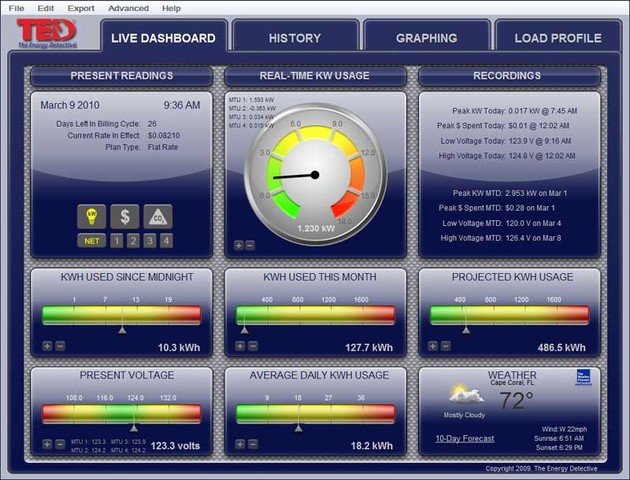By now, most of us have heard about energy monitoring. The technology has been available for a while, but it still hasn’t caught on. Why is that? Based on our experience, it’s not always clear to people exactly how energy monitoring technology can help them. That’s why we decided to write this blog: to discuss some strategies that smart homeowners can use to make the most of their energy monitoring system. We hope they’ll help you find easy ways to conserve energy and save money on your electricity bills.
Here at Bluewater Energy, we use a product called The Energy Detective that monitors the circuits in your home or business, tracking energy usage directly from the main panel. This system has been nicknamed TED by its developers—it might remind you of another famous robot, HAL, but this system is far more benevolent.
But what makes TED so useful, you ask?
If you read part 2 of our “Hydro Bill Explained” blogs, you’ll remember the formula we used to calculate kWh for your appliances. Want an easier way? TED can display this number via an optional wireless device or through a third-party app on your smartphone. It’ll also provide data in realtime, so that when you turn off the upstairs lights, you can see exactly how much you’ll be saving per hour. Pretty neat, huh?

If you’re using TED, our first tip is to put a display somewhere visible. This will ensure your energy usage stays top of mind—not forgotten in the basement or a storage closet. Make sure everyone in your home or business understands the basics of using TED, that way you can work as a team to conserve energy.
The next step is to take a look at TED’s graphing and history options to figure out when and where you consume the most electricity. You’re likely to have some spikes on your chart, so take a closer look at the times they’re happening. Are people using laundry machines or dishwashers during peak hours? Switching up your routine can make using these appliances less expensive. Is heating or AC being left on during the day? TED also makes it easy to identify excessive energy usage, so you can take steps to solve it.
If you want to go further, you can use TED to figure out which appliances are consuming the most electricity. Some simple research should help you find alternatives to whatever you’re currently using. Maybe this means switching to LED lightbulbs or buying an energy-efficient fridge that doesn’t suck up power like a vacuum. For this, we recommend searching for ENERGY STAR appliances — an independent program that identifies all kinds of energy efficient products.
Remember that these tips apply equally to any energy monitoring system! If you’d like to learn more about TED, please get in touch or check out our Energy Monitoring page. Helping others get smart about energy conservation is our passion, and we’re glad to be able to share it with you.
